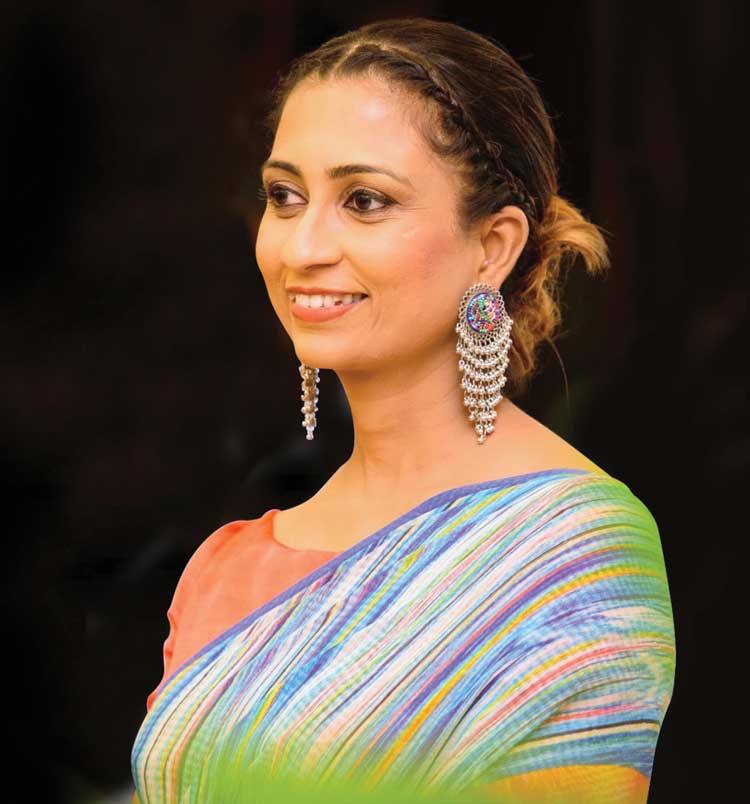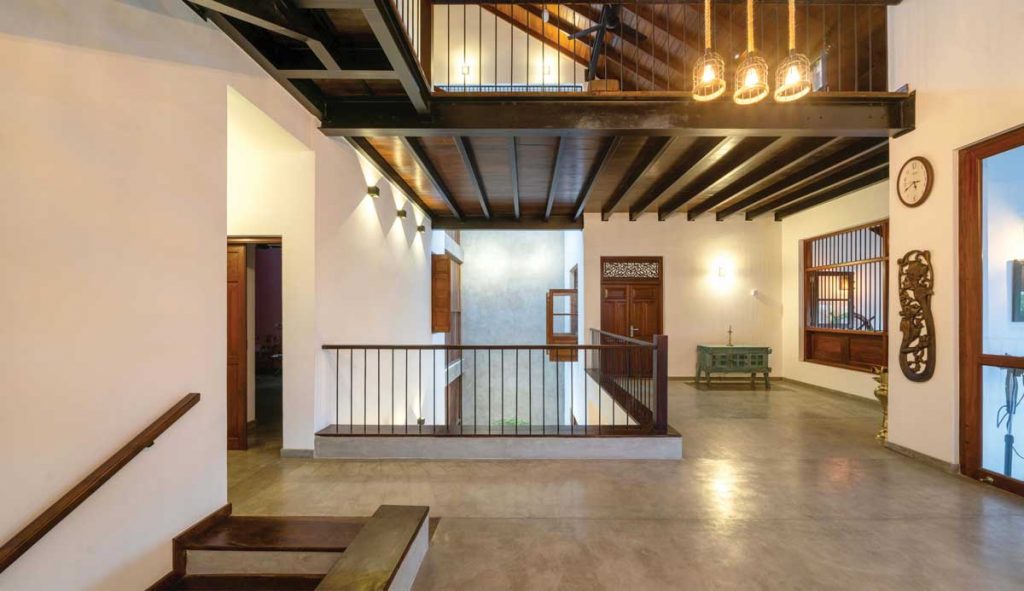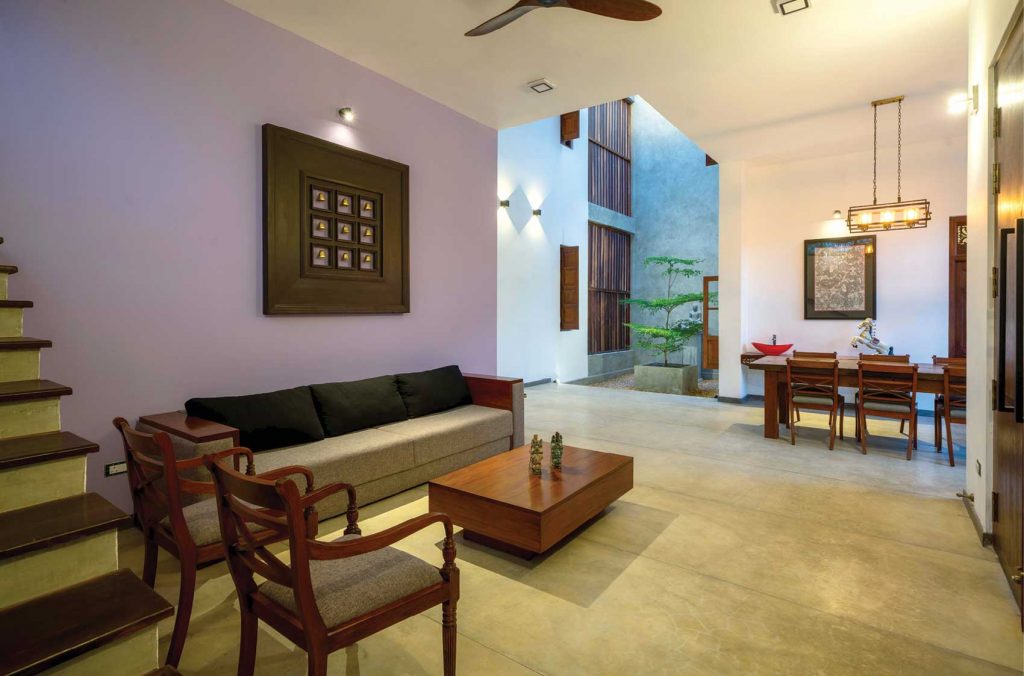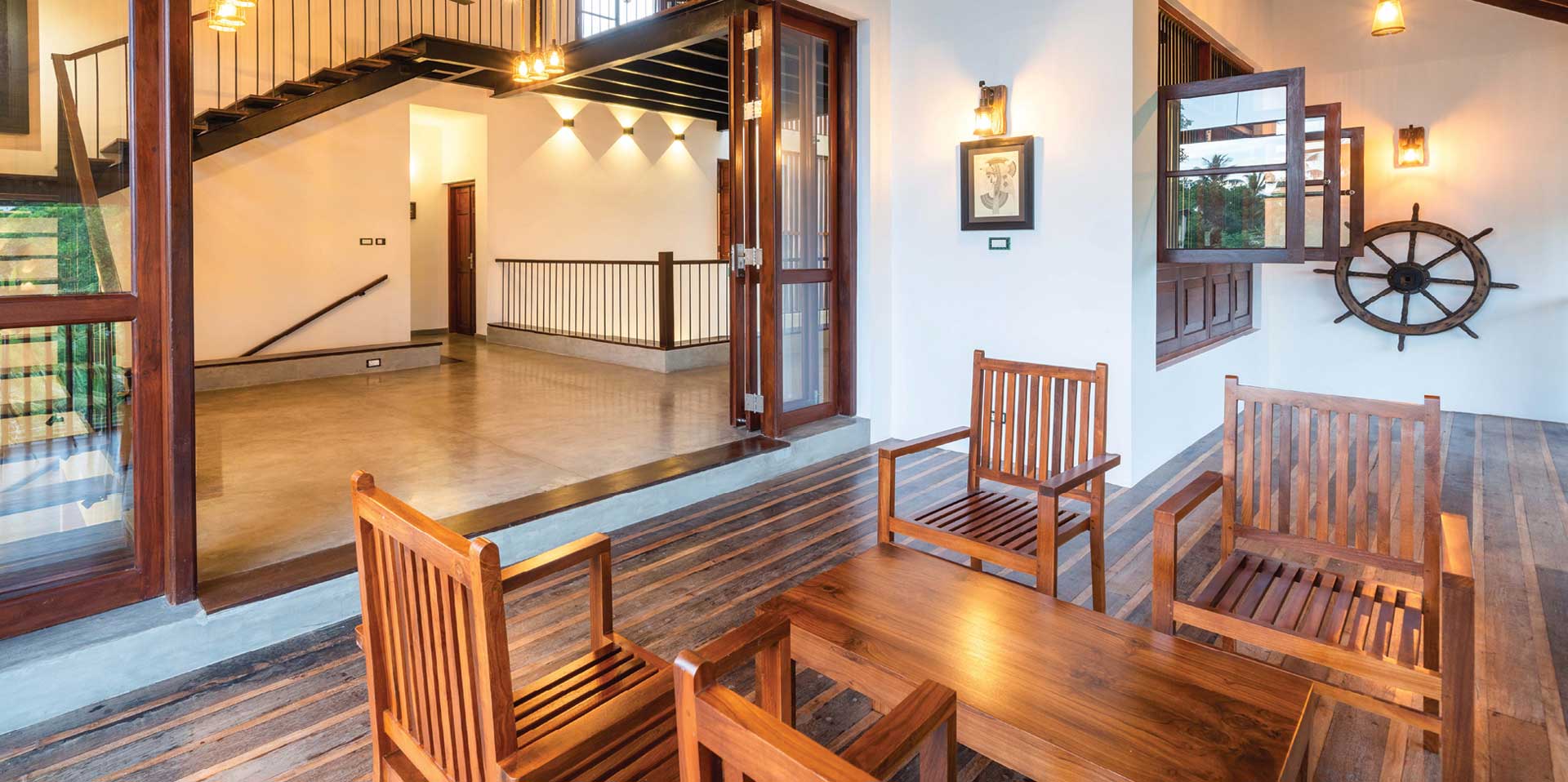
SENSITIVE ARCHITECTURE
Creating mindful connections between spaces and nature
Lakmini Ranasinghe in conversation with Nicola Jayasundera
As a child who enjoyed painting, Lakmini Ranasinghe remembers being lost between lines and colours. Over the years however, her unique pattern and style emerged; and as the details and decorations were added in, she gradually fell in love with traditional Sri Lankan architecture.
With Lakmini’s own home being her most memorable accomplishment, she believes that creating architecture that satisfies both aesthetics and techni-cally sound designs is what makes a good architect.
Q. What’s your take on sustainable living in the local context?
A: Since society constitutes people, the environment that architects create makes no sense without individuals in it. Therefore, before de-signing, I always study people and try to serve the community in a sensible manner. This is what’s called ‘sustainable living.’
My interpretation of sustainable design covers the entire process that’s implemented with the use of materials, innovative construction techniques and technology.
This is done to improve the efficiency of the building while connecting it with nature, by assuring physical and mental comfort for its occu-pants.
The entire process needs to be a perfect blend of aesthetics and technically competent creations.
Q: In your opinion, how does architecture contribute to the development of a culture?
A: Architectural wonders from the past reveal the glory of our ancient kingdoms and demonstrate the vibrancy of Sri Lanka’s diverse cultural heritage. The environment and diversity of our art, food, traditions, customs and practices explain the richness of our unique cultural herit-age.
Architecture is the designing space for our cultural heritage; it is based on the needs of users and their activities, which are defined by our culture. Therefore, architecture becomes the direct expression of our ethos on the global platform.
Q: How effective is Sri Lanka in promoting the arts and what policies would empower this ethos further?
A: A global wealth of traditions is the principal motivation for tourists as they seek new cultures to experience differences in the performing arts, rituals, handicrafts and cuisines. Cultural cooperation is stimulated through such interactions; it prompts discussions, facilitates under-standing, and encourages tolerance and peace.
As a country with a long history, we have a great deal of inherited knowledge in the fields of agriculture, architecture, construction, and arts and crafts.
With a lifestyle and economy that was based on agriculture, we lived well by respecting and protecting nature. Daily activities were linked to nature while traditional knowledge of crafts and medicines, which were based entirely on natural elements, was passed down from gen-eration to generation.
Inspired by these unique foundations, we should aim to create localised spaces in our built environment, and establish platforms to show-case a sense of pride and identity for our communities. We need to use their unique performances, and create awareness of our culture and history among tourists.

Q: And what’s your take on ongoing urban development efforts?
A: Urban development is the process of designing buildings and placing them in a sensible manner. This helps arrange infrastructure and public places, while creating a balance between the environment and sustainable norms for a better future.
It is important to understand the stages and processes involved when implementing such design schemes; it’s also necessary to under-stand the needs, filter the wants and formulate a brief accordingly.
Proposals need to be implemented on time without compromising on the outcome of the design during the regulatory processes. Archi-tecture is for every citizen and isn’t limited to only high income earners in society.
As a socially responsible architect, I try to create mindful connections between spaces and nature, and strengthen social bonds for relaxed and happy environments.
As a child who enjoyed painting, Lakmini Ranasinghe remembers being lost between lines and colours. Over the years however, her unique pattern and style emerged; and as the details and decorations were added in, she gradually fell in love with traditional Sri Lankan architecture.
With Lakmini’s own home being her most memorable accomplishment, she believes that creating architecture that satisfies both aesthetics and techni-cally sound designs is what makes a good architect.
Q. What’s your take on sustainable living in the local context?
A: Since society constitutes people, the environment that architects create makes no sense without individuals in it. Therefore, before de-signing, I always study people and try to serve the community in a sensible manner. This is what’s called ‘sustainable living.’
My interpretation of sustainable design covers the entire process that’s implemented with the use of materials, innovative construction techniques and technology.
This is done to improve the efficiency of the building while connecting it with nature, by assuring physical and mental comfort for its occu-pants.
The entire process needs to be a perfect blend of aesthetics and technically competent creations.
Q: In your opinion, how does architecture contribute to the development of a culture?
A: Architectural wonders from the past reveal the glory of our ancient kingdoms and demonstrate the vibrancy of Sri Lanka’s diverse cultural heritage. The environment and diversity of our art, food, traditions, customs and practices explain the richness of our unique cultural herit-age.
Architecture is the designing space for our cultural heritage; it is based on the needs of users and their activities, which are defined by our culture. Therefore, architecture becomes the direct expression of our ethos on the global platform.

Q: How effective is Sri Lanka in promoting the arts and what policies would empower this ethos further?
A: A global wealth of traditions is the principal motivation for tourists as they seek new cultures to experience differences in the performing arts, rituals, handicrafts and cuisines. Cultural cooperation is stimulated through such interactions; it prompts discussions, facilitates under-standing, and encourages tolerance and peace.As a country with a long history, we have a great deal of inherited knowledge in the fields of agriculture, architecture, construction, and arts and crafts.
With a lifestyle and economy that was based on agriculture, we lived well by respecting and protecting nature. Daily activities were linked to nature while traditional knowledge of crafts and medicines, which were based entirely on natural elements, was passed down from gen-eration to generation.
Inspired by these unique foundations, we should aim to create localised spaces in our built environment, and establish platforms to show-case a sense of pride and identity for our communities. We need to use their unique performances, and create awareness of our culture and history among tourists.
Q: And what’s your take on ongoing urban development efforts?
A: Urban development is the process of designing buildings and placing them in a sensible manner. This helps arrange infrastructure and public places, while creating a balance between the environment and sustainable norms for a better future.
It is important to understand the stages and processes involved when implementing such design schemes; it’s also necessary to under-stand the needs, filter the wants and formulate a brief accordingly.
Proposals need to be implemented on time without compromising on the outcome of the design during the regulatory processes. Archi-tecture is for every citizen and isn’t limited to only high income earners in society.
As a socially responsible architect, I try to create mindful connections between spaces and nature, and strengthen social bonds for relaxed and happy environments.








